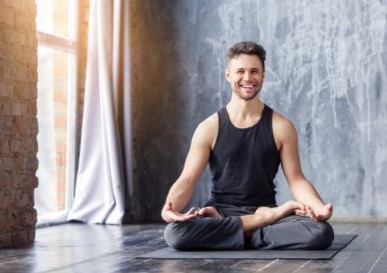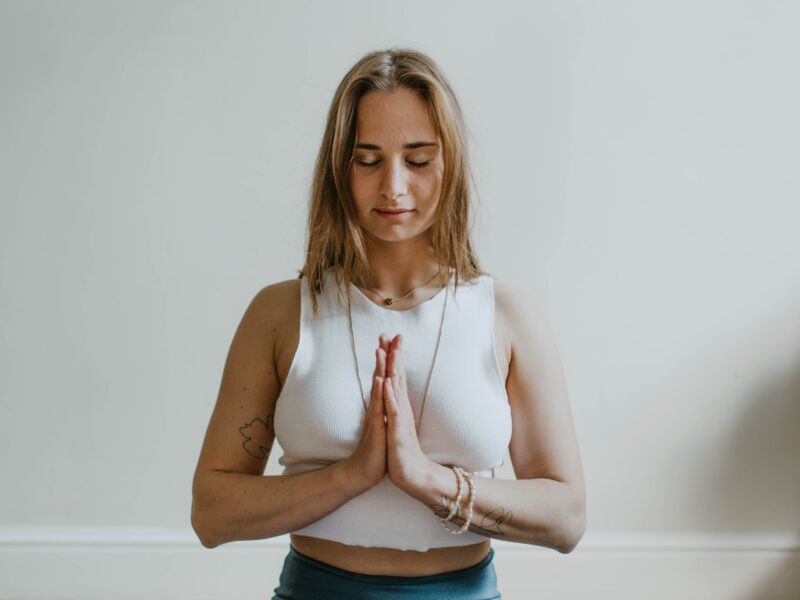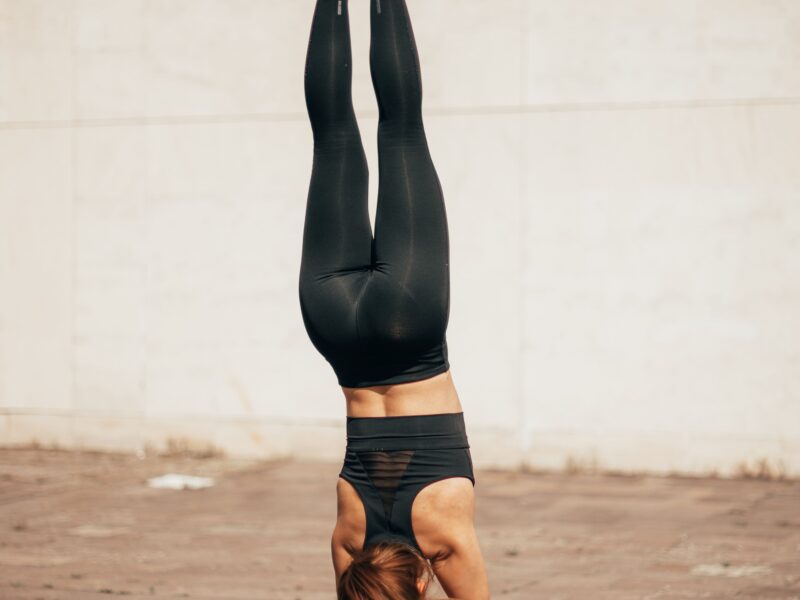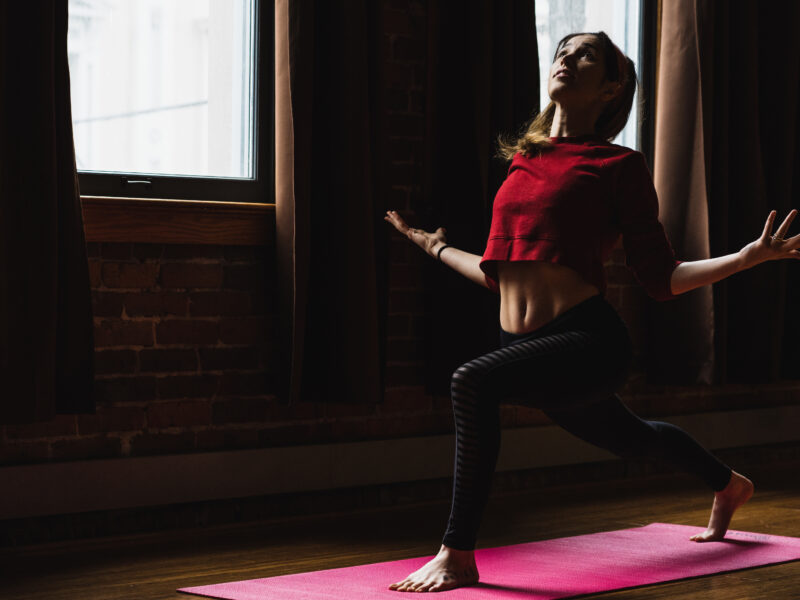Imagine a place where you are treated like royalty regardless of the neighborhood you grew up in; where you are encouraged to dream big and to take action to make such dreams a reality; an environment where the only requirement is to be yourself and where others celebrate you for who you are.

By Dr. Trish Corley
This article was written in 2017.
For several years I had imagined such a place—the Shine Center, home to the Africa Yoga Project (AYP) in Nairobi, Kenya. I imagined a place full of love and support, as that is what I felt in any of my interactions with those involved with the project. My imagination turned to reality when I traveled to Kenya in April this year to assist my teacher, Paige Elenson (co-founder of the Africa Yoga Project), in leading a 200-hour yoga teacher training.
I was greeted at the airport with a heartfelt hug and an African-size smile that made me feel like Kenya was truly my new home for a while. Our first stop was the Shine Center, and the love and support I experienced was immense. I was greeted with a sense that we are already connected, even before we shared our names.
On my third day in Nairobi, 120 people representing 22 countries (mostly African countries), gathered at the start of the yoga teacher training. Diverse does not begin to describe this group of people. While many were seasoned yogis, some were stepping onto a yoga mat for the very first time! We also had two participants and one trainer who were hearing-impaired. I was particularly struck by the mix of socio-economic backgrounds. The majority of the participants were able to attend the training via scholarship as a result of the fundraising done by AYP and its supporters. Many of them lived in slums, where they were exposed to crime on a regular basis. In our very first team meeting, Paige encouraged us to acknowledge the existence of cultural norms and to honor them. It was clear, however, that this training was about tearing down the walls that divide us, and supporting each other to be authentically connected.
The first part of the yoga teacher training took place at the Shine Center and involved a lot of sweaty and inspiring asana practices. Participants began to learn how to teach yoga, and this started with lessons in active listening. Teaching yoga does not happen by sharing knowledge alone. A powerful yoga teacher makes a connection with his or her students and provides a lesson or a tool that is needed in the moment. I learned that in order to understand what someone needs, it is necessary to really listen; to put my own story aside and make an effort to understand someone else’s point of view.
On the third day of the training, we went to the various outreach programs set up by AYP teachers. Each of them commit to teaching free yoga classes in their own communities as a way to spread the power of yoga to those who would otherwise have not been exposed to it. My group followed Kevin Ogutu to his class at U-Tena, a community center developed by young residents of the Viwandani-Mukuru slum in East Nairobi. Kevin teaches yoga and dance to young adults. He also advises them that although their opportunities for education after primary school might not be available, they should never cease learning.
 After greeting each other with smiles at U-Tena, Kevin guided our group and his students to form a circle and hold hands. We practiced yoga on a dusty cement floor without yoga mats. We breathed, smiled, moved, and connected. After lying down in Savasana, Naomi, the young woman next to me, rested her arm on top of mine. Where the societal norm in many places is to pull away, we stayed. There was no wall between us, only connection. After the yoga practice, we were presented with a performance of traditional African dancing and drumming and I was brought to tears by the energy, pride and expression they demonstrated. I made eye contact with one of the girls and she brought me onto the dance floor. We danced, connected, and had a blast!
After greeting each other with smiles at U-Tena, Kevin guided our group and his students to form a circle and hold hands. We practiced yoga on a dusty cement floor without yoga mats. We breathed, smiled, moved, and connected. After lying down in Savasana, Naomi, the young woman next to me, rested her arm on top of mine. Where the societal norm in many places is to pull away, we stayed. There was no wall between us, only connection. After the yoga practice, we were presented with a performance of traditional African dancing and drumming and I was brought to tears by the energy, pride and expression they demonstrated. I made eye contact with one of the girls and she brought me onto the dance floor. We danced, connected, and had a blast!
Upon our return to the Shine Center, the team met to share stories about our group experiences at the various outreaches. For many of us, it was our first time in slum areas, and it brought up emotions that seemed difficult to process. Some groups went to orphanages and homes for children with disabilities. We were all witnesses to significant poverty and ways of living that seemed quite challenging to us. What really struck me though was how liberating it was for the team to openly express their feelings. We listened to each other, and created a space to share our thoughts and feelings without concern for what others will think. The result was connection, and ultimately freedom to be who we are.
On day 6 of the training, we traveled from Nairobi to Camp Kilima, a safari camp on the Masai Mara. The intensity of the training seemed to rise as we moved away from the noise of the city and into the backdrop of the Serengeti, where the space for listening was vast. The training is a Baptiste Yoga program and therefore focuses on three key practices: Asana, Meditation, and Inquiry. Inquiry may also be described as self-discovery and happens by answering deep and thought-provoking questions. We were encouraged to look within and discover where we had created barriers for ourselves, where we listen to lies that we tell ourselves about not being good enough, and how we suffer in an effort to live up to the expectations of others.
As people from 22 different countries and diverse backgrounds opened up with their own stories, we came to realize that the root of all our pain and suffering is the same—we suffer when we are not able to say what we want to say or do what we want to do. We suffer when we are not able to be true to ourselves. Access to healing thus comes from allowing ourselves, and each other, to be who we are. The training created a platform for the participants and the team to share their own stories authentically— and healing began to take place. I was encouraged and supported as I shared my own insecurities and fear of not being a good enough yoga teacher, wife and daughter. I found freedom and joy in listening to a young man express his concerns on providing for his mother in addition to his immediate family. My sense of freedom and joy came in realizing that my greatest contribution to this man was my ability to listen. My listening gave him the chance to be himself and therefore the chance to heal.
 For several more days, we continued to sweat through the asana practices, find stillness in the meditations, and explore parts of ourselves in the inquiry work. The participants practiced teaching yoga and became more and more confident. Everyone seemed to get lighter and brighter as the training continued. I was honored to lead the anatomy portion of the training. As I prepared to teach, I realized that my own point of view could stand in the way of them really learning. As many of the participants had no formal education, I wondered how they could sit and listen to theories on alignment and anatomy. I soon realized that this point of view would create a barrier and limit their ability to learn. I thus chose to drop my own point of view and teach from a space of listening. I taught a bit about the anatomy of the shoulder, and then listened to see how it landed. It turns out that Kevin’s point of view that learning should never stop is quite insightful. When I approach my teaching without expectations of my students, they have the freedom to be who they are! From that space they learn and grow more.
For several more days, we continued to sweat through the asana practices, find stillness in the meditations, and explore parts of ourselves in the inquiry work. The participants practiced teaching yoga and became more and more confident. Everyone seemed to get lighter and brighter as the training continued. I was honored to lead the anatomy portion of the training. As I prepared to teach, I realized that my own point of view could stand in the way of them really learning. As many of the participants had no formal education, I wondered how they could sit and listen to theories on alignment and anatomy. I soon realized that this point of view would create a barrier and limit their ability to learn. I thus chose to drop my own point of view and teach from a space of listening. I taught a bit about the anatomy of the shoulder, and then listened to see how it landed. It turns out that Kevin’s point of view that learning should never stop is quite insightful. When I approach my teaching without expectations of my students, they have the freedom to be who they are! From that space they learn and grow more.
Before returning back to Nairobi, we spent a day out in the Masai Mara. We went on a safari ride and came in contact with elephants, zebras, gazelles and many other amazing animals that roam the beautiful land. We also completed a service project in the village of the Masai people; painting their school and building several desks. After, we had a chance to connect with the people of the village and step into their lives. We were welcomed with Adumu, a traditional song and dance. The woman wore elaborate beadwork and colorful shukas, a traditional sheet wrapped around the body. They stood side by side in one line and made small rhythmic hops forward with their feet together while they simultaneously created a drone humming sound. The men wore traditional red shukas, carried wood spears, and took turns stepping in front of each other in a contest of who can jump highest. I was most surprised when I realized that all of this was taking place on a field of cow dung. The Massai are indigenous to both Kenya and Tanzania and continue their traditional ways of living. Their homes are made of cow dung and do not have electricity.
I was fascinated to experience a way of life so different than my own. As a group, it was recognized that the Masai have a different point of view from many of us, and it is important that we respect their way of living. Being open to the point of views of others opens the door to freedom for everyone. As Baron Baptiste wrote in Being of Power, “The stories, interpretations, and meanings we give to experiences are the filters we need to drop in order to come to the empowering state of Samadhi.”
The lessons I learned in Kenya go with me wherever I am. I know that healing does not come from a special destination on the map, but rather from a space within me.
Dr. Trish Corley is an internationally recognized Baptiste certified yoga teacher, and a doctor of physiotherapy. Her classes and trainings are known for inspiring students to make the transformation they seek while having fun!
This article was first published in the print edition of Yoga Journal Singapore, which is now Yogahood Online.






